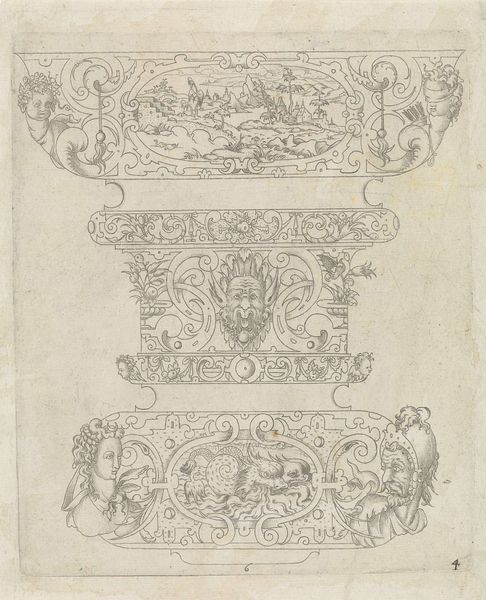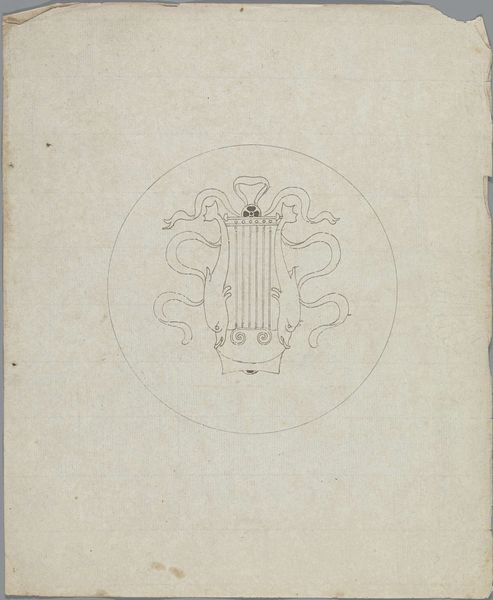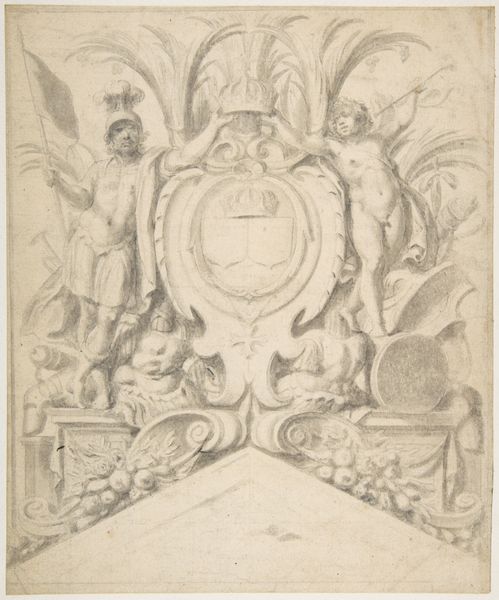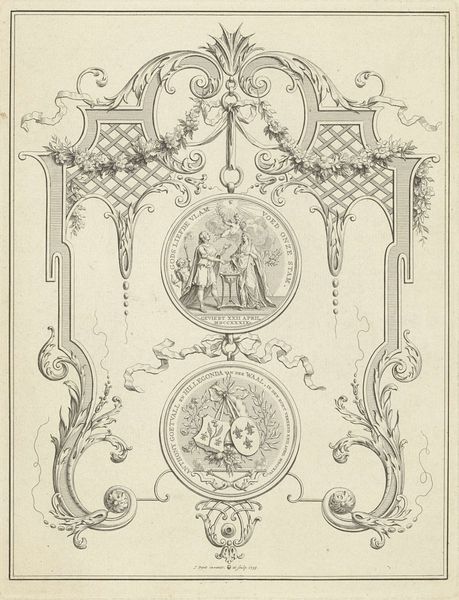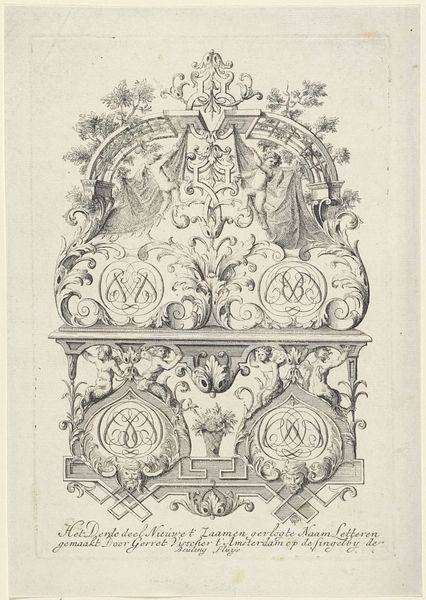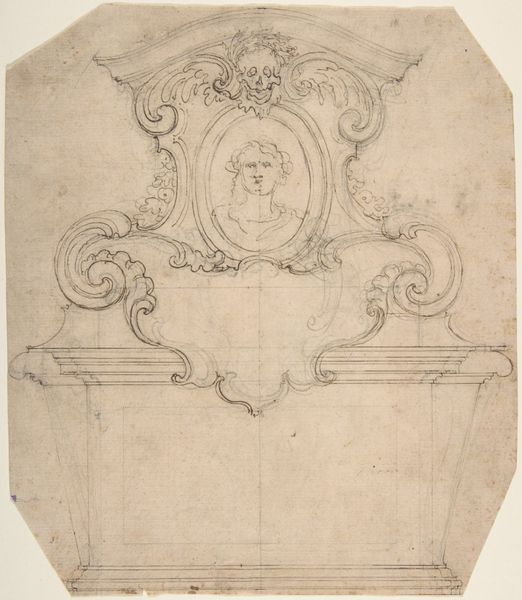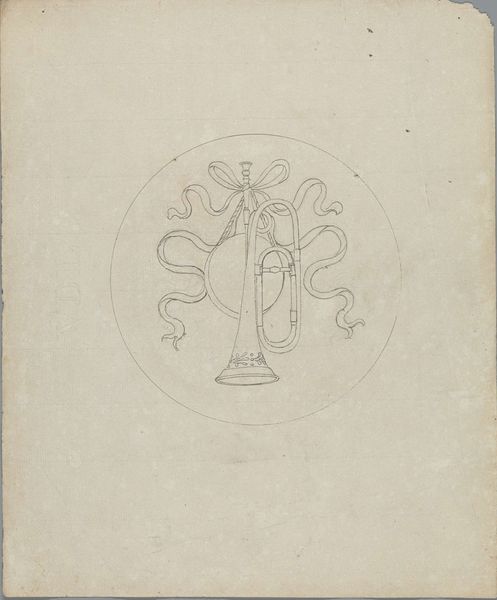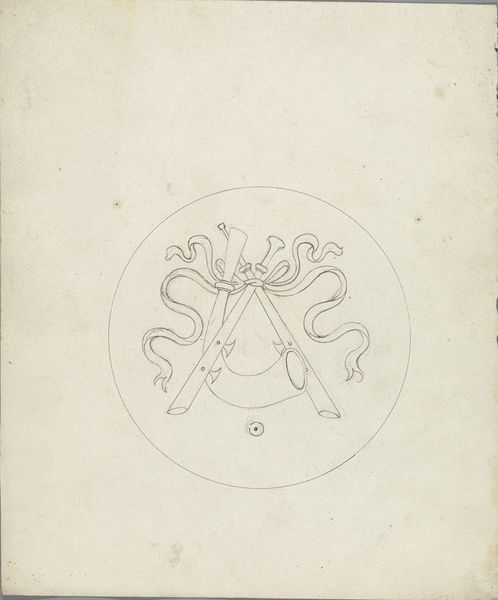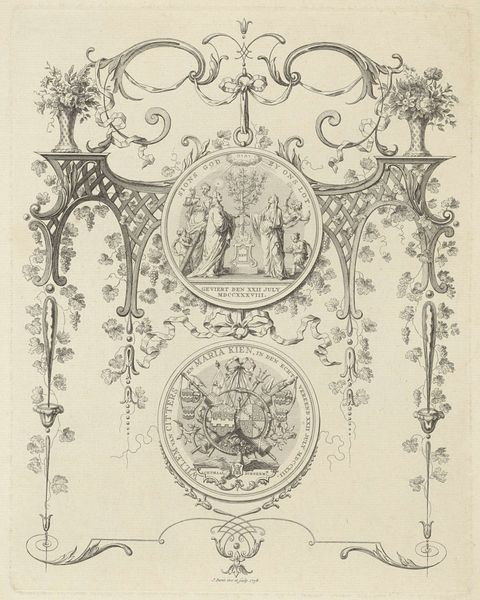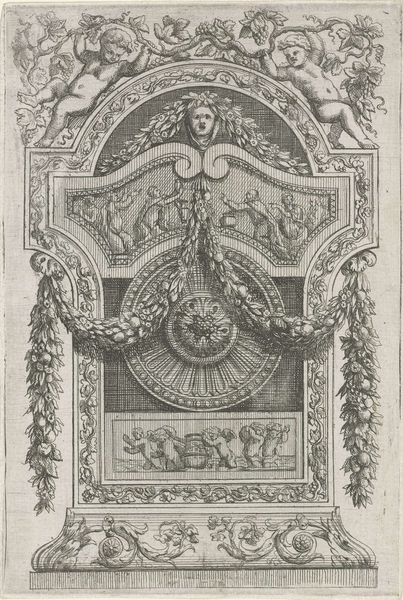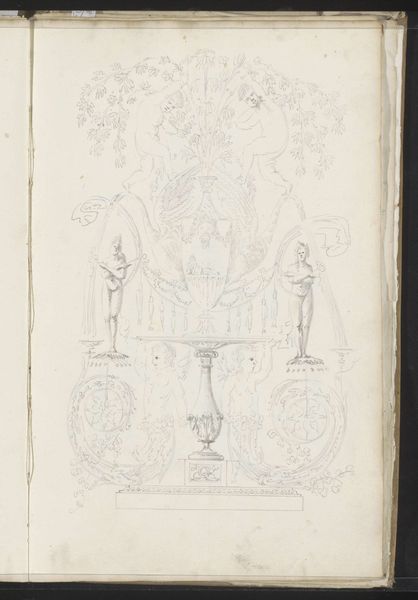
Dimensions: sheet: 13 9/16 x 8 1/4 in. (34.4 x 20.9 cm)
Copyright: Public Domain
Curator: At first glance, I perceive an intriguing heraldic sketch, faintly drawn yet suggestive of grandeur. The composition appears meticulously balanced, poised between geometric abstraction and baroque flourishes. Editor: We're looking at a "Design for coat of arms," crafted sometime between 1700 and 1800. It’s currently housed at the Metropolitan Museum of Art. It’s an ink and pencil drawing on paper, by an anonymous hand. The translucence is interesting; I’m drawn to the paper itself. Its texture seems to inform the design. Curator: The symbolism resonates with layers of cultural memory. The lion and the eagle—classic totems representing courage and vision—flank the shield. A crown, hovering above, implies authority and perhaps divine sanction. Editor: The level of planning here intrigues me. You see all these subtle under-drawings? You can almost follow the hand of the artist, figuring out proportions, making small corrections... It really underlines the labor and the skill that goes into even a design sketch like this. Curator: Indeed. It is more than mere craft. The geometric underpinnings of the composition, enclosed within that oval form, suggest a cosmic order—the heraldic devices embedded with meaning through their forms and relationships. Editor: I wonder about the social context this piece operated within. Was this a commission? A personal project? What kind of labor was involved? Understanding the economic realities behind its production helps us understand its cultural significance. Was this piece designed for an aristocratic client? Or to propose some innovation within heraldic conventions? Curator: Consider that academic-art context within a specific patron class. How important was social symbolism in that sphere, in order to express power dynamics. These heraldic emblems were intended to visually communicate the narrative and history of a bloodline. It acted as a kind of shorthand for legacy. Editor: It makes you think about how much status used to be communicated via physical objects. Now you just update your social media! Seeing this object really drives home just how grounded social identity used to be in materials and process. Curator: Absolutely. Visual objects act as cultural touchstones. Studying this design allows us to unpack complex power dynamics. Editor: And from my angle, it reminds us how those displays of power were created through work—through human hands. Curator: Yes. A worthy design preserved over centuries! Editor: Precisely, now, let's investigate our next acquisition.
Comments
No comments
Be the first to comment and join the conversation on the ultimate creative platform.
